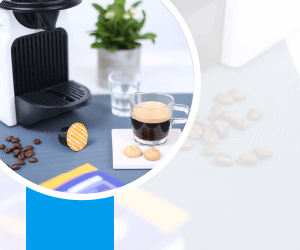Coffee Roasting - How Is Coffee Roasted?
The roasting process determines the aroma. On which tree do the beans for the espresso, the cappuccino or the café au lait grow? An important question coffee lovers ask themselves.
However, the decisive factor for the later method of preparation is not necessarily the type of coffee, but the roasting. In addition to the method of preparation, the roasting process also determines the subsequent aroma of the coffee: Roast the coffee and achieve the best result!
Roasting Process: The Transformation Of The Coffee Beans
Coffee roasting is as diverse as the range of coffee beans. The processes and devices for this are as different as the different coffees that are made from them. Roasting coffee means giving it its very own, unmistakable character. This applies regardless of whether the green coffee is Arabica, Robusta, or a mixture of several varieties from different growing areas. The roasting transforms coffee into a foodstuff that is then available for one of the many enjoyable preparation methods.
The roasting process initiates several important processes. The heat causes the beans to lose water and thus weight. At the same time, their volume increases due to the formation of water vapor due to the slowly rising temperature. This chemical process runs as a chain reaction and leads to the typical, different coffee aromas. The sugar contained in the beans caramelizes at around 320°F to 375°F. Between 330°F and 410°F, the roasted aroma is created by the Maillard reactions. New flavors develop through the combination of sugars such as glucose and lactose with amino acids.
Maximum temperature and heat curve are of central importance in the roasting process. Drum roaster or hot air roasting (industrial roasting), airflow, and chimney in the roasting of the coffee bean are some of the factors that influence the taste of the coffees prepared later. So it’s no wonder that the roasting curve is often a well-kept trade secret.
Best Coffee Gear Guides

Best Espresso Machines

Best Coffee Makers
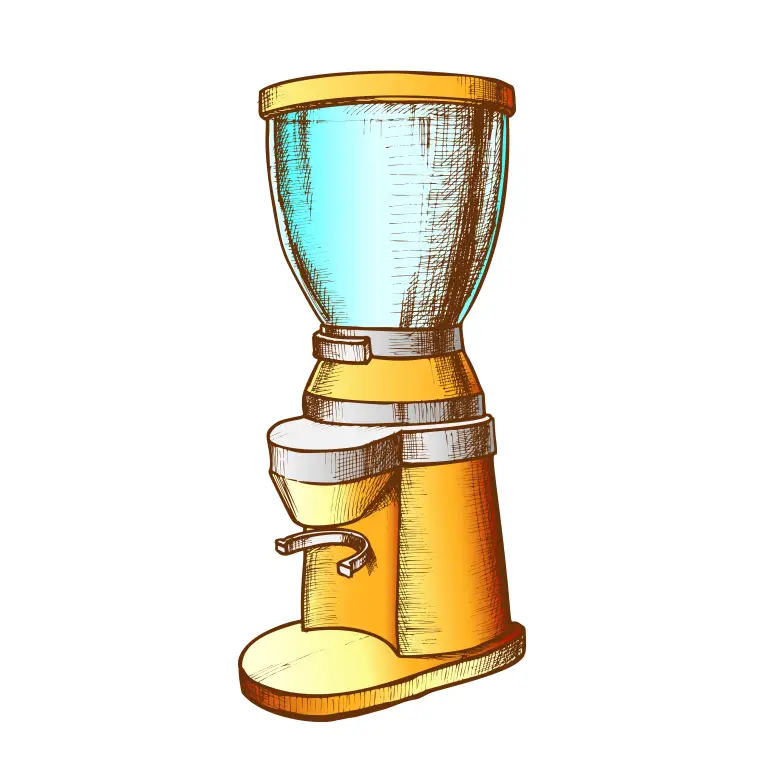
Best Coffee Grinders
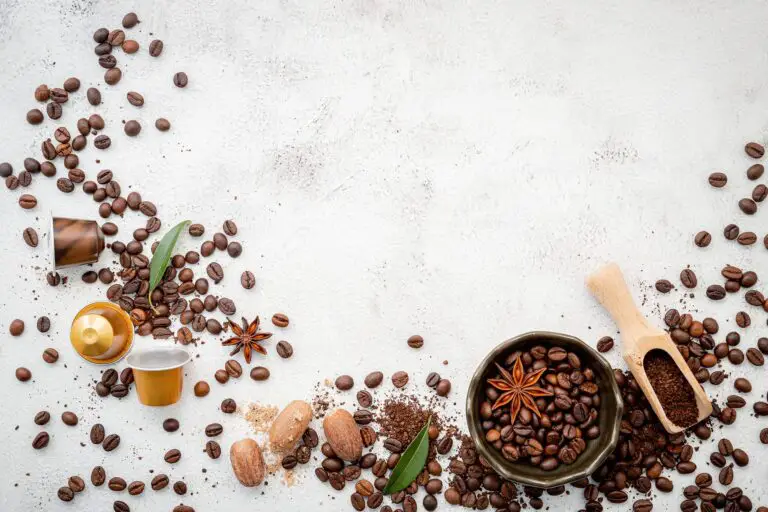
Best Coffee Beans
Various Roasting Methods
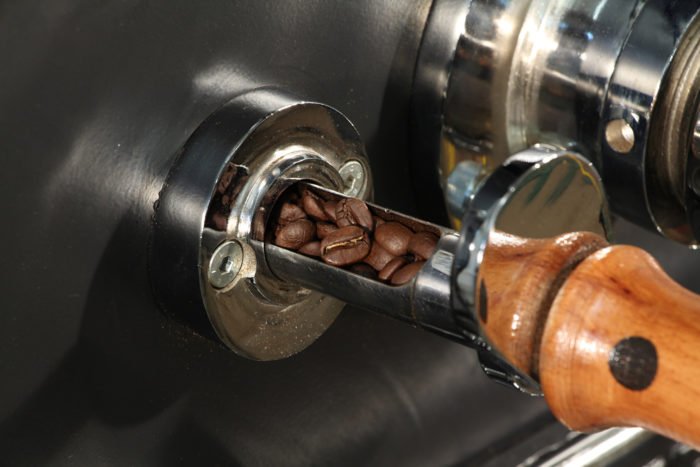
The way the coffee is roasted determines the taste of the later coffee. The principle that long-term roasting leads to better taste and a more pronounced aroma still applies. However, this technology, which is preferred by the small roasters, is not necessarily better than industrial roasting: drum roasters are still used there, which are primarily used for roasting smaller quantities of coffee beans.
Traditional Drum Roasting
Traditional drum roasting usually takes eight to 25 minutes and reaches temperatures between 355°F and 465°F. The amount of coffee produced varies between 65 pounds in shop roasters and over 1300 pounds in larger systems. During drum roasting, the drum, which is heated from the outside, rotates around its own center with notches to twirl the coffee beans.
Internal heating with a fan is also conceivable in order to keep the temperature throughout the drum at the same level. Long-term roasting gives the coffee beans enough time to develop aromas and break down unwanted acids.
Industrial Coffee Roasting (Hot Air Roasting)
Industrial coffee roasting in a short time takes about two to seven minutes. The coffee beans go through the roasting process in a range of 550 to 1320 pounds. Hot air between 750°F and 1470°F is used, which can result in unwanted, even burnt, roasted aromas. The coffee bean is nice and brown on the outside, but it cannot be “done” on the inside.
In Comparison
With drum roasting, the temperature curve is much flatter, and the final temperature is not as high as with industrial hot-air roasting. Once the beans have reached the desired maximum heat, they then cool on a sieve. This takes much longer than roasting and sometimes cold air or even water cooling is used, especially in industrial roasting. However, caution is advised with the latter: the coffee beans should not absorb too much moisture after roasting.
The Degree Of Roasting Determines The Taste
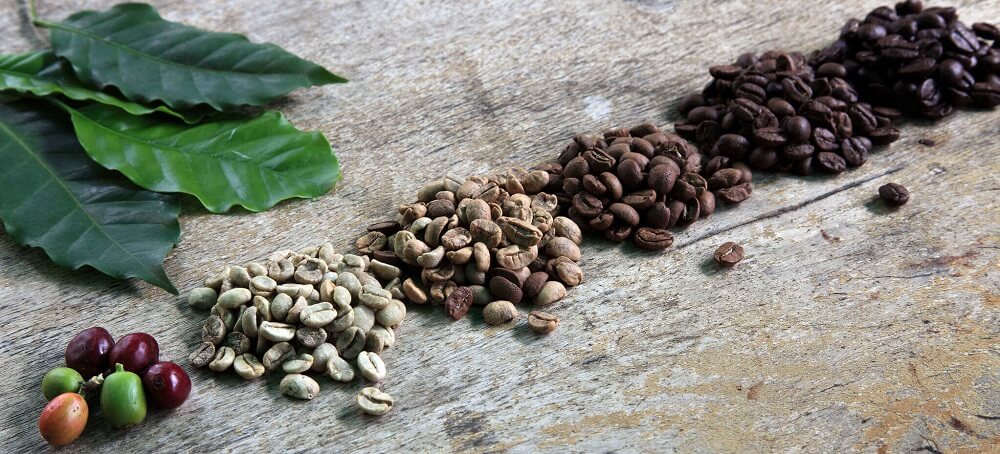
A basic distinction in roasting coffee is between light and dark. The light roast leads to grassy or bready aromas, emphasizing the acidity. This roasting process is recommended for filter coffee, for example. The dark roast takes longer and goes to a higher temperature level. This leads to less acidity and more bitterness in the coffees that are made from it. These beans are primarily used for espresso.
The following designations are common for the different degrees of roasting:
- Light roast = pale or cinnamon roast
- Medium roast = American roast, breakfast roast
- Strong roast = light French roast, Viennese roast
- Double Roast = Continental Roast, French Roast
- Italian Roast = Espresso Roast
When roasting different types of coffee, there are two ways to do it. The varieties are roasted separately and only mixed afterward. The roasting process responds individually to the different varieties, but different extraction profiles arise in the subsequent mixing. If the coffee is mixed before roasting, such as in industrial roasting, the taste is more balanced. However, it is important to ensure that the coffee beans have a certain balance in terms of size, hardness, and degree of moisture. Otherwise, some components are not yet roasted – others, however, are already “burnt”.
Coffee Blends
There is nothing wrong with mixing light and dark roasted coffees. Keep in mind, however, that certain degrees of roasting is not suitable for some types of coffee and that one type of coffee or another is preferable at certain times of the day or night.
It would be a waste to heavily roast Ethiopian coffee because it would lose the originality of its character. It would also be a pity to subject Yauko Selecto or Kona coffee to a dark roast, as they would lose their classic aroma. Other quality beans, on the other hand, benefit from a strong roast and thus receive a new, interesting note. Mexican coffee, for example, tastes excitingly sweet when heavily roasted.
Some types of coffee, such as Antigua from Guatemala, retain their fine acidity and fruity aroma despite being heavily roasted. Other types of coffee are more difficult to handle. Coffees from Sumatra, for example, are very full-bodied but have relatively little acidity. With a stronger roast, the acidity is lost, while the aroma becomes sweeter.
Country Roasts
In contrast to the coffee otherwise offered, country roasts only consist of beans from one country of origin. This gives the coffee a stronger character than normal blends. However, the taste of a country roast can sometimes vary – depending on the harvest in the country in question.
Nice Anecdotes About Coffee Roasting
Coffee has been part of human cultural history for around 1000 years. It began on the high plateaus of East African Ethiopia. So it’s no wonder that there are many myths and anecdotes surrounding him. For example, this story is about the first, unwanted roasting of green coffee. It’s the story of the shepherd whose goats picked the red fruit from a certain tree consumed. After that, they remained very active throughout the night.
The shepherd looked for an explanation for this behavior and showed some of the red cherries to the abbot of the nearby monastery. He thought they were the work of the devil and threw them into the fire. There, however, they developed such a seductive scent that the monks put out the fire. This is how the delicious coffee was created from the extinguishing water of the first, unplanned, and unconscious roasting.
Conclusion
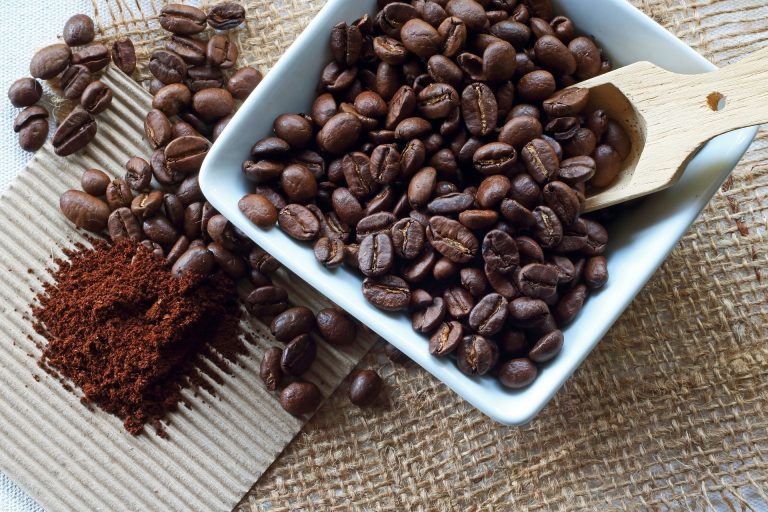
The most important thing that connoisseurs take away from the article on coffee roasting is the realization that freshly roasted coffee beans, which are then ground without much loss of time and prepared, for example, to espresso or café au lait, unfold the greatest pleasure.
It doesn’t matter which coffee you choose from the many methods of preparation: it always tastes best freshly roasted.
Disclosure: We use affiliate links in some of the products that appear on this page. This helps our site cover the costs of the site, Thanks for your support. Read more


